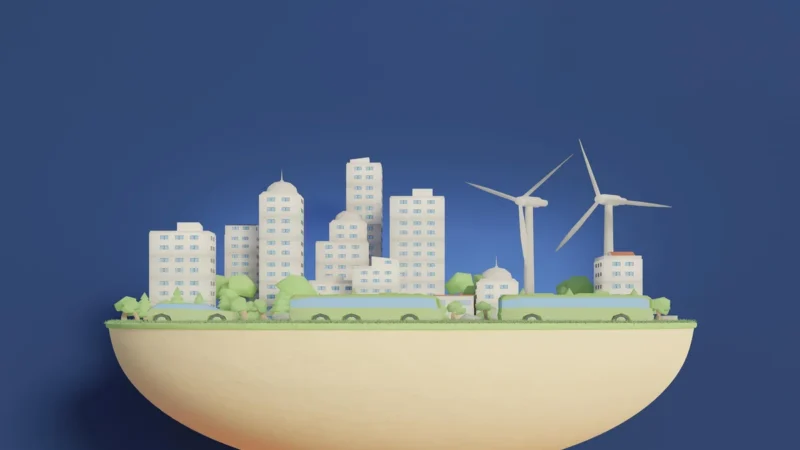The Impact of Single-Use Plastics on the Environment

Single-use plastics have become an integral part of our daily lives, offering convenience and affordability in a wide range of products. However, their widespread use comes at a significant environmental cost. This article explores the various ways in which single-use plastics impact the environment, from production to disposal, and highlights the urgent need to address this issue to safeguard our planet’s health.
1. Production and Resource Depletion
Single-use plastics are predominantly made from fossil fuels, primarily oil and natural gas. The production of these plastics consumes vast amounts of these non-renewable resources, contributing to resource depletion. The extraction and processing of these fossil fuels also lead to habitat destruction and emissions of greenhouse gases, exacerbating climate change.
2. Pollution and Wildlife Impacts
One of the most visible and troubling consequences of single-use plastics is the pollution they cause. Plastic waste litters landscapes, clogs waterways, and accumulates in oceans. This pollution has detrimental effects on wildlife. Marine animals often mistake plastic fragments for food, which can lead to ingestion and entanglement, causing injury or death. The chemicals present in plastics can also leach into the environment, posing further threats to ecosystems and species.
3. Microplastics
Microplastics are small plastic particles, often less than 5mm in size, that result from the breakdown of larger plastic items or are intentionally manufactured, such as microbeads in personal care products. These tiny plastic particles infiltrate the environment and pose a range of environmental and health risks. They can enter the food chain when consumed by aquatic organisms, ultimately reaching humans. The long-term consequences of microplastic exposure are still not fully understood, but they raise concerns about their potential health effects.
4. Non-Biodegradability
Single-use plastics are designed for short-term use, but they persist in the environment for centuries. Unlike organic materials that naturally break down and return to the earth, plastics do not biodegrade. Instead, they photodegrade, breaking into smaller and smaller pieces when exposed to sunlight, contributing to the spread of microplastics.
5. Carbon Footprint
The production and disposal of single-use plastics contribute significantly to the carbon footprint. The extraction of fossil fuels, manufacturing processes, transportation, and incineration of plastics release greenhouse gases, further fueling climate change. Reducing our reliance on single-use plastics can play a role in mitigating this impact.
6. Resource Intensive Recycling
While recycling is often promoted as a solution to the plastic problem, it has its limitations. The recycling process itself requires significant energy and resources, and not all plastics are easily recyclable. Contamination, lack of infrastructure, and limited market demand also hinder recycling efforts. Therefore, a substantial amount of plastic waste still ends up in landfills or incineration facilities.
7. Landfills and Incineration
Single-use plastics contribute to the mounting problem of overflowing landfills and overburdened incineration facilities. Landfills take up valuable land, emit methane (a potent greenhouse gas), and pose risks to groundwater contamination. Incinerating plastics can release toxic pollutants into the air, further compromising air quality and public health.
8. Economic Costs
The environmental impact of single-use plastics translates into economic costs. Cleanup efforts for plastic waste, health expenses related to plastic pollution, and loss of tourism revenue due to littered beaches are just a few examples of the financial consequences. Addressing the plastic problem proactively can help reduce these costs.
Key Takeaways
The widespread use of single-use plastics poses a severe threat to the environment, from resource depletion and pollution to wildlife impacts and climate change. Microplastics, non-biodegradability, and their carbon footprint compound these issues. While recycling is a step in the right direction, it is not a panacea, and reducing plastic consumption and transitioning to more sustainable alternatives is crucial. By acknowledging the environmental impact of single-use plastics and taking collective action to reduce their use, we can work towards a cleaner, healthier planet for present and future generations. It is time to rethink our reliance on single-use plastics and shift towards more sustainable and eco-friendly alternatives to protect our environment.
FAQs:
Single-use plastics are disposable plastic items designed for one-time or short-term use. Examples include plastic bags, straws, cutlery, drink bottles, and food packaging.
Single-use plastics have various environmental impacts, including resource depletion, pollution, wildlife harm, the generation of microplastics, non-biodegradability, a significant carbon footprint, and increased landfill and incineration waste.
Single-use plastics are primarily made from fossil fuels (oil and natural gas). Their production depletes non-renewable resources and contributes to habitat destruction and greenhouse gas emissions.
Single-use plastics often end up as litter in landscapes, waterways, and oceans, leading to pollution. This pollution can harm ecosystems and wildlife and affect human health.
Microplastics are small plastic particles that result from the breakdown of larger plastic items. Single-use plastics contribute to the generation of microplastics, which can have environmental and health risks.


